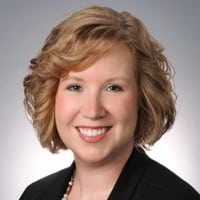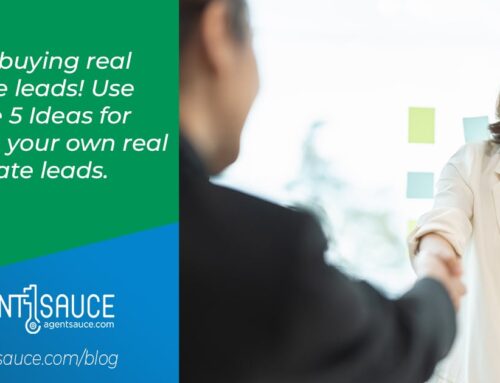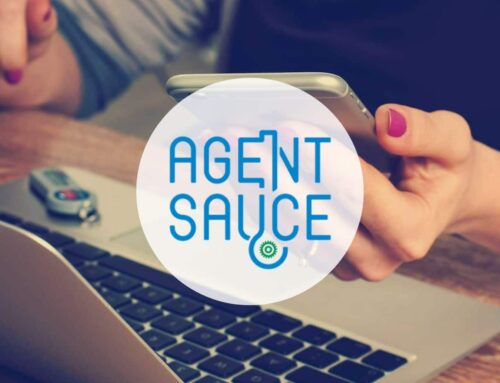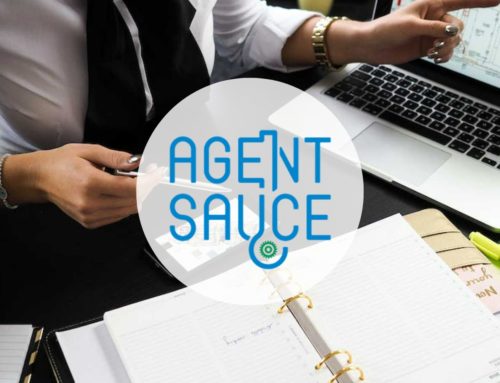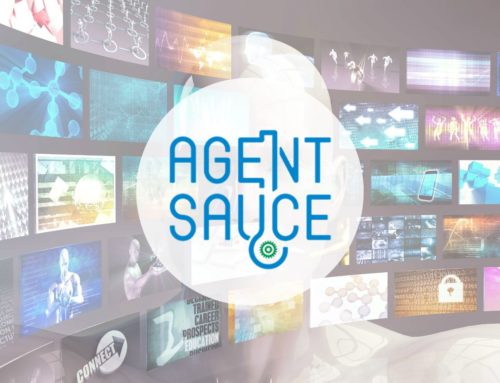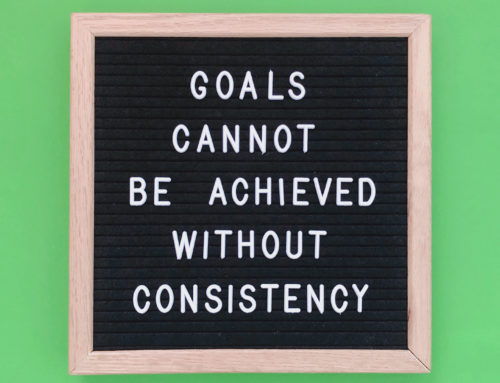Another great interview! This time with Gabie Benson of the Indianapolis, IN based Realtor Foundation, the charitable arm of MIBOR. We talk about her program, how agents can give back and how to find organizations like this in your area.
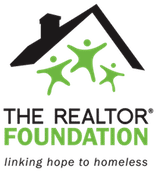
Podcast Takeaways
- Volunteering helps you build relationships with those in the industry.
- You don’t need to make an on-going commitment in order to make a difference.
- Serving on a committee strengthens leadership and other skills helping you to be more successful.
Podcast Links
Realtor Foundation – Giving Back Podcast Transcript
Adam Small: Hello and welcome back to the Real Estate Marketing minute powered by Agent Sauce. I’m your host, Adam Small. With us, as always, is Kimberly Small. Hi, Kim.
Kimberly Small: Hey. How are you?
Adam Small: Doing well and you?
Kimberly Small: Doing great.
Adam Small: Great. Today we have with us a special guest. We have Gabie Benson, the executive director for The REALTOR Foundation here in Indianapolis. Hi, Gabie, how are you?
Gabie Benson: Good, how are you?
Adam Small: Doing great, doing great. We’re here today to talk to Gabie about agents giving back to the communities that they live in. Gabie, why don’t you start off by telling us a little bit about yourself.
Gabie Benson: Thanks for having me. I’m Gabie Benson. I’m the executive director of The REALTOR Foundation. The REALTOR Foundation is the philanthropic arm of the MIBOR REALTOR Association. Our realtor association serves counties across central Indiana. The REALTOR Foundation’s mission is to mobilize our local real estate community to raise funds and foster support for organizations who transition central Indiana’s homeless into safe and secure housing. We were established by the MIBOR REALTOR association more than 30 years ago as a philanthropic option, as a charitable option, for our members to get involved in the community and to give back collectively into central Indiana’s most needed solutions. In, I would say, the early 2000s we had a group of individuals from our local United Way who came to see us and they were asking for a grant from our board of directors for kids who were aging out of foster care and who were becoming homeless. 40% of kids who age out of foster care at 18 years old immediately become homeless.
Adam Small: Wow, that’s terrible.
Gabie Benson: It’s terrible. They have broken those relationships with all of the trusted adults that they’ve lived with and have been supported by. There was a great need in our community to support those kids. I know at 18 years old I was not ready to be completely independent and on my own. I can’t imagine if you had also been through the foster care system through your whole childhood on top of that. Our board had been looking at what our purpose is. What our mission is. How do we make a greater impact. How do we find that thing that our agents, our members, and our community our most passionate about? We realized it was homelessness. It made sense. Realtors make their living by putting people into homes. Not just realtors. It’s our home inspectors and our lenders and our title reps.
Adam Small: There’s an entire industry around it, mortgage loans, titles, and everything associated with the purchasing of a home.
Gabie Benson: Exactly, our industry puts people into homes. There are thousands in central Indiana, Indianapolis, Marion County, our largest city here and hundreds more in the surrounding counties, even in our rural communities who go every night without a safe secure place to call home. That’s why we do what we do. That’s what makes my job really fun. Because I get to make a huge impact and I get to see agents get really excited about what they do.
Adam Small: That’s amazing. Children never really would have come to mind when you talked about homelessness. Typically you think of somebody that is an adult. You mentioned children earlier. Tell us about some of the other people that your organization services. Obviously children is a good portion of that apparently, but what else? Who else do you guys help out?
Gabie Benson: A common misconception about homelessness is that it’s that older man on the street corner with a sign. In Indianapolis we have a lot of issues with panhandling so you see that as homelessness but it’s really not. The average age of a homeless person in central Indiana is seven years old. If seven is the average imagine how many homeless babies that is. We put a lot of the funds that we raise into supporting family homelessness, local shelters that are specifically designed to serve families and also domestic violence shelters. Domestic violence is the leading cause of homelessness for women and children. We invest a third of our dollars into those two areas.
Adam Small: Wow, that’s a significant chunk.
Gabie Benson: It is because children should not be homeless. I have a six year old boy at home and I can’t imagine any other kiddo his age not knowing where they were going to sleep at night.
Adam Small: Well, and hunger often goes with homelessness hand in hand, right?
Gabie Benson: Absolutely and kids who experience homelessness are twice as likely to have learning disabilities. They get behind in school because they miss days kind of switching around locations where ever they’re staying. When families are homeless you don’t see them. They hide because with me and my two kids if I were on that street corner like that older man with the sign somebody would call child protective services. Families tend to hide so that’s not …
Adam Small: The kids end up in the foster care system because of the homelessness. So they hide because they don’t want that to happen.
Gabie Benson: Exactly.
Adam Small: They don’t want to be homeless but they don’t want to lose their kids either, right?
Gabie Benson: Exactly. That’s why you don’t think of the children, because you don’t see them.
Adam Small: Right, right.
Kimberly Small: You mentioned a number off different organizations helping the families and stuff like that. Your organization enables an agent or an affiliate to essentially be involved in multiple organizations and help multiple organizations at the same time. What are some of the other types of organizations that the foundation helps?
Gabie Benson: Sure. We are a pass through organization. We don’t serve any one particular family or individual or group. We choose really carefully selected organizations who serve victims of domestic violence, homeless families, youth, veterans, and other really targeted vulnerable populations. I’ll give you a couple of examples. We fund two programs that support individuals who are facing addiction and mental illness and they’re homeless because of those addictions. We fund a special program with an agency called The Damien Center. They serve individuals who are HIV positive or at risk for HIV. As you can imagine there’s housing challenges that come along when you also have health issues that you’re caring for, not to mention discrimination in housing that often those individuals will face. We have a program that we love that’s called Project Home Indy. These are teen moms who are pregnant or have very, very little children and need some place to get settled as they’re going through their pregnancy and the early stages of having a baby in a homelike community where they can kind of address some of the traumas from their life. But also get on a really good path. It depends but we like to choose those programs, those organizations who are serving either a really specific population that is being … we’re seeing some increases in homelessness or generally families and domestic violence.
Kimberly Small: I think I actually did a tour of the facility that helped the teen moms. I can remember them making a wish list. 16 year olds wishing for diapers and things to help their baby. It kind of put things in perspective as to where they were. I can recall them doing a really good job helping them get on their feet and get to a place where they could be independent. That was kind of nice to see and be able to visit those types of facilities. I always enjoy hearing the success stories and people coming together and collaborating to help a common good, whether it be improving their community or doing something on a national level. Can you share some of those stories, some of the highlights that have been going on?
Gabie Benson: Sure. This year we actually launched our first realtor week of service. With our realtor association we have, we call them divisions, they’re regional clubs. The north side of our town has a club, south side. Our different counties have their own clubs. It’s a way for members to get connected locally in their own community and talk about the issues that are directly impacting them. All of our divisions support our realtor foundation. They’re huge contributors to what we do. They’re also fantastic volunteers and they do amazing work just within their local community. We wanted to harness that all together in one collective effort so we had eight of our local divisions put together service projects and many of them are with organizations that we financially support.
Gabie Benson: One example on only one day we had our Hendricks County division of my board group. They were canvasing their towns in their county, three big towns in their county, with information about homelessness and the particular shelter those people could use as a resource. So that Bob and Sue who owned the grocery store or the restaurant, or operated the library had the resources if they found a homeless family or knew somebody that was going to be at risk. They would have those resources to be able to get in contact. So many of them told our volunteers that they had now idea they had a homeless shelter for families in their county. They had no idea that it was such an issue. They didn’t even think about it.
Adam Small: Right, well again, you don’t think of children first when you think of homelessness and then like you said they didn’t to hide so that makes it even harder to think of it. I think awareness of where the shelters are is probably a really big factor a lot of people just don’t know that those shelters are around.
Gabie Benson: Absolutely. They reached 100 companies and churches and contacts that day with information for this homeless shelter all in two hours. 20 volunteers spread out around the county and were sharing information that was directly associated with what that county needed and what those families needed and how they could get the support they needed. At the same time, I had a group in Hamilton County, maybe one of our most affluent areas of Indianapolis. I had 25 volunteers at a shelter there for women who are pregnant adults, 18 to … their average age was 20 years old, adult age, who were pregnant. Going through a pregnancy and homeless for whatever reason but needing that same thing that ten girls needed but really on a different level. They had this beautiful home in Carmel, Indiana. No one would know that it’s a homeless shelter unless you specifically supported that program yourself.
Gabie Benson: Our volunteers walked in. They reorganized their donation pantry. They sanitized it because it was flu season. They reorganized their kitchen. They pulled vegetables out of their garden. They did anything that this charity needed that day. They did a whole deep clean. What I heard back from the director there, the women came home because they had been out working, came home. They were amazed at how organized and clean the house was. It’s the same feeling you get when you walk into your house after you’ve worked all day cleaning it. That sense of pride. They had a sense of pride for their home. We were able to be there that day to help them. Our week of service was a huge success. We had 9 projects going on across central Indiana. That impact will continue. We’ll continue to make that an annual event. We know our members love to get that one on one experience being more hands on. It’s not just about contributing dollars. It’s about really getting involved.
Kimberly Small: That’s great when you can create a project and be very focused on what you want to accomplish and all come together and put the resources together. It’s amazing what you can do. You mentioned something that we talked about, misconceptions of homelessness. We talked about children, but I think there’s another misconception that these homeless people they don’t want help or they don’t want to get into a better position. While there may be some people that fall into that category, most of them are not. We talked about the teens that we’re pregnant. I think most people, “They’re responsible. They don’t want to do better.” It was kind of eye opening for me to visit and see that they do want to do better. They’re in a position that they didn’t expect to be in and they do want help and they do want to do better and they do want to contribute as part of that. Being able to see that and being involved takes away that idea that it’s somebody sitting on the corner asking for money that doesn’t want to do anything else.
Kimberly Small: Being involved in a foundation like yours is … People, agents, are able to give back and help others but it’s also an opportunity for agents to increase their leadership skills and those types of things. You have committees. You have elected directors for your foundation and that kind of stuff. Can you talk a little bit about how … or maybe give an example of an agent who joined the foundation to help out and you really saw them grow as an individual and as an agent?
Gabie Benson: Yeah, absolutely. We couldn’t do everything that we do without our volunteers. I am only one staff person. Our realtor foundation operates with one full time staff member and the rest is completely volunteer driven. We’ve only had a paid full time staff member for about the last ten years. Our volunteers are crucial to what we do. That is because we grow based on educating and inspiring other members. When I have a room of 18 extraordinary board members who can passionately talk about our work, they talk to their colleagues and their colleagues tell their colleagues. It’s easy to do what we do because our group is just particularly passionate about what we do. We have a board of directors, 18 member board of directors. They’re ultimately responsible for making sure we raise all the money that we need to raise and that we’re choosing really good organizations to invest in.
Gabie Benson: We have a committee for every fund raising event we operate. We have a committee of members that are focused strategically on marketing and social media and communications. Making sure that we fulfill one of our strategic goals of inspiring our members to be proud. Fostering a sense of pride among our members about what we do. We have members who are looking at our financials and a community who’s looking at our endowment and our long term growth to make sure The REALTOR Foundation is always here and we always exist. I need different sets of skills for that. Some of our members come and they have great contacts. They can call any realtor and get a phone call back. I need those skills. I also need that realtor who is not afraid of a no. Realtors get nos a lot. They’re good sales people and so they’re …
Adam Small: They’re not going to be a realtor very long if they’re afraid of the no.
Gabie Benson: Exactly. Exactly. All of those things that make somebody really good at real estate makes them really good fund raisers too. It’s all about relationship building. It’s all about confidence in your product. It’s making connections with individuals. Having really good follow through and follow up. Then not being scared of the now. Asking and not being scared of hearing a no. Agents make particularly good volunteers for me. I have seen individuals come onto a committee. They raised their hand or somebody identifies them as potentially being really good on a committee. They’ll serve for a couple years. We’ll invite them onto our board of directors. Then I have seen our board of directors move on and be on the MIBOR REALTOR Association’s board of directors or serve as a chair of their division and really step into those leadership positions. I’m always proud when I see my board members move up to the MIBOR board and have that next opportunity of leadership of serving the entire association. I just need more of them.
Kimberly Small: I’m sure their business is growing as they’re continuing to take on more responsibilities for that. I’m sure a lot of agents think well I’m swamped. I don’t have time to be involved on a board or committee or a position like that. Especially a new agent. I hear new agents say all the time “I just passed the test and I’m just knee deep in everything trying to learn everything.” Those are probably agents that really do need to get involved and get started because people are interacting with the people that they’re going to be doing business with. You talk about the affiliate members. You talk about other agents and that kind of stuff. What do you tell agents who say, “I just don’t have time.” What do you suggest?
Gabie Benson: We have a lot of different ways that agents can get involved with The REALTOR Foundation. Of course I will take a contribution from anybody. Financial contributions are our number one. We have a program called transactional giving. We work with all of the large brokers in our area to offer, it’s kind of like a payroll deduction. You can allocate $10, $20 out of each of your closings. You don’t even have to worry about it. You just sign a sheet of paper that says every time I have a closing I’m going to give $10 to The REALTOR Foundation. That has been the most successful fund raising strategy for us because it’s consistent. It comes in every month. That agent is going to do it year after year after year. If they’re having a really good year we’re going to have a really good year. They don’t have to come to a committee meeting to do that and to make an impact. We’re so grateful for our local brokers who offer that and help us by making that opportunity available for their agents.
Gabie Benson: Board leadership does take a significant amount of time and those are special individuals. Who can give me 18 to 20 hours a month of their time. We offer those one time volunteer opportunities for that person who really does want to make an impact but they are swamped and they are focused on growing their business. Do you have two hours on a Friday? Do you have three hours on a Wednesday morning that you can come help us paint a dining room or put together packets for this group or that group. We try to make it a mix of opportunities throughout the year so that there’s something for everybody. We put a premium on individuals who help us out on social media because we know that that’s such a great avenue for getting our message out. Just sharing and commenting and telling other individuals. Share a post and tell everybody in your network why that was important to you. That’s the best way for somebody to help us without taking much of their own time.
Adam Small: what about the person that just doesn’t know how to get started? How would they do that? Who would they contact or get involved.
Gabie Benson: Me.
Adam Small: Okay.
Gabie Benson: They can call me anytime. I love to talk to our members about what their skills are. Where we can best use them. On our website, which is www.realtorfoundation.org, we have a whole section about volunteering that describes all of our committees and volunteer opportunities. There’s a sign up there that they can give me their contact information and I’ll get in touch about what exactly it is that they want to get involved with.
Adam Small: Okay, great. Now you said to contact you directly, do you want to give out your phone number or your email address or do you not want to? It’s up to you.
Gabie Benson: They can call MIBOR at 317-956-1912 and ask for Gabie and get in contact with me that way.
Adam Small: Okay, great. You guys serve central Indiana, right? You’re a branch of MIBOR, an offshoot of MIBOR which is an Indianapolis board of realtors here. What about agents that are in other states that are listening right now, or other areas? How would you recommend they go about finding an organization similar to yours?
Gabie Benson: Most regional realtor associations and some state associations have their own charity of some kind. Their missions vary. We’ve selected homelessness as our mission. In another state you might find that their mission is about supporting realtors who have a specific need who are in an emergency position and have a need. They may support affordable housing. They support families and animals. It depends. It varies. But most associations, if it’s not a regional association they should look to their state association and see if they have a charity entity to support.
Adam Small: Probably go to the association’s website and find it there most likely.
Gabie Benson: Absolutely. I get a phone call a month from another association’s charitable foundation who wants to know how we do what we do. How we’ve grown to the size that we are.
Adam Small: You’re having a big impact, not just locally.
Gabie Benson: Yeah. On a national level word gets around. We’ve worked really hard to build up all of those marketing pieces that really showcase what we do. So we get found pretty easily too. I’m always happy to help other associations who are trying to establish their own foundation. I’ve shared everything from our bylaws to written documents so they can see kind of how to model it. Talk to them about how they would approach their own brokers to set up their own version of transactional giving. I’m always happy to help other associations.
Adam Small: Before we wrap up do you have anything else that you want to add? Did we miss anything important that you want to put out there so that people know?
Gabie Benson: I appreciate the opportunity to come talk about what we do. It’s really my favorite thing about my job. I have found that the real estate industry is just incredibly generous. I don’t have a real estate background. I am in awe at what realtors do because I don’t know that I have the personal patience for all of the things that our members go through on a daily basis. I was so amazed. I just didn’t think that realtors would be as generous as they are. It was just a misconception on my part. I’ve been a fund raiser my entire career. I saw this opportunity in my local community. I really cared about the issue of homelessness. It seemed a good fit for me. Until I was here, and meeting our members and understanding what agents care about and how passionate they are as well and how generous they are. That’s what has fueled me and kept me here for almost six years now doing this work. Our donors and our supporters are just fantastic they really do care about making a difference in our local community. That gets me up every day. I appreciate them so much.
Adam Small: Well great. Thank you so much. We appreciate your service. Kim, do you have any final thoughts?
Kimberly Small: Actually in that I think that NAR actually did a study recently talking about the percentage of realtors that give back compared to the general population and found that it was a higher percentage. I’ll have to locate that. Maybe we’ll put a link in that into the podcast. We’ll definitely put a link to REALTOR Foundation. Then there’s a couple of NAR initiatives, the Good Neighbor Award, which is given out, I think, every year. We’ll put a link to that to help inspire people all over. There’s also the Realtor’s Relief Foundation that helps when tragedies such as the fires and the hurricanes that have happened. We’ll put links to those organizations. Hopefully inspire agents to get involved. If they don’t have something in their area, hopefully they can help create something like you guys have here.
Gabie Benson: That’s great.
Adam Small: Great. Well, Gabie, thank you so much for joining us today on the Real Estate Marketing Minute. Learned a lot about your great organization, REALTOR Foundation. To all of our listeners, if you like what you hear don’t forget to like or subscribe us. Thanks and have a great day. We’ll see you next time.


